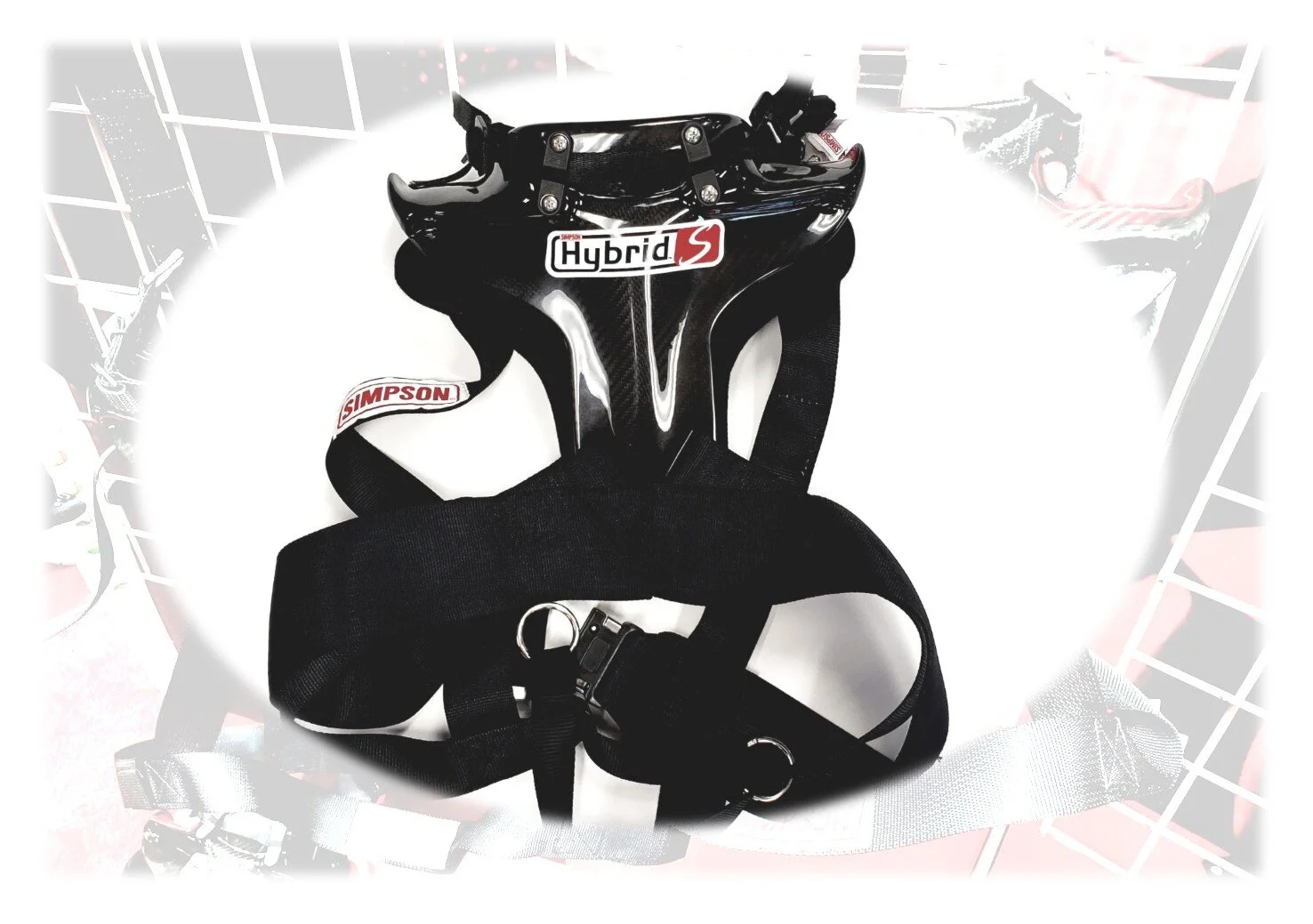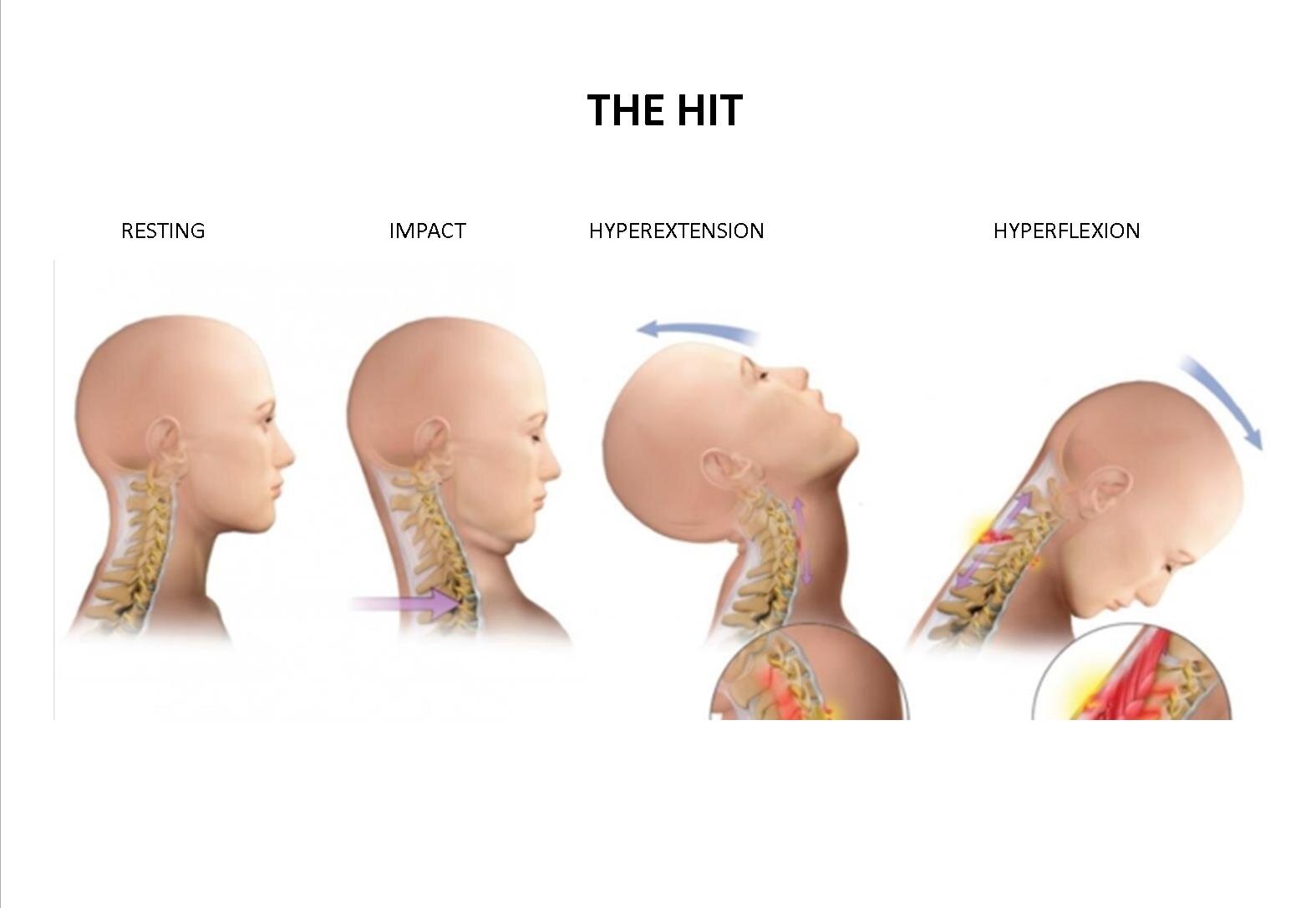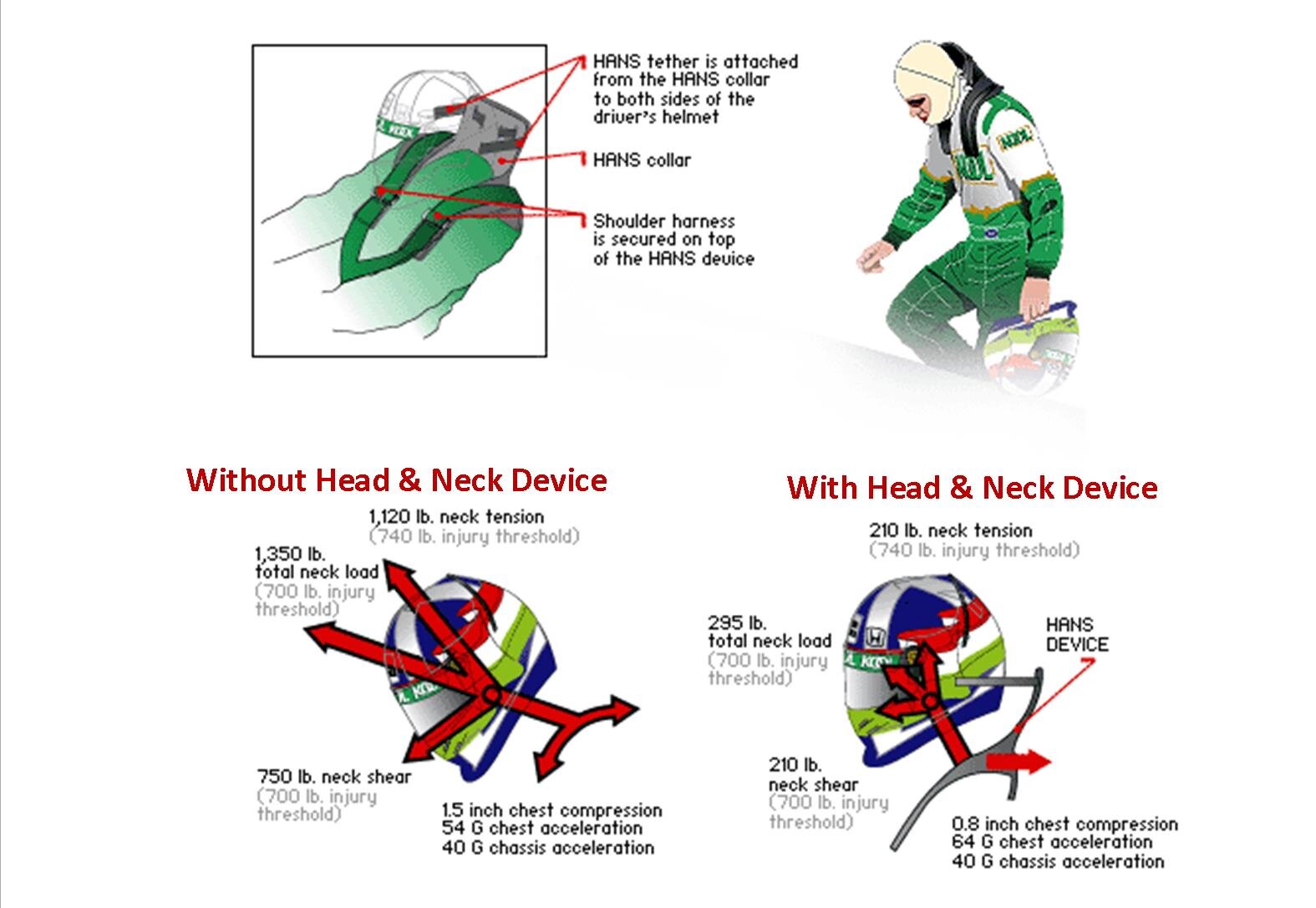
We know the Hybrid S is expensive, but weigh this against the costs and consequences of what the device is preventing.


“The Hybrid S allows high-performance driving instructors, auto manufacturing test engineers, and other drivers with 3-point harnesses access to the advantages of head restraint safety.” Simpson Racing Products
The Prevention
Car manufacturers 3-pt seat belts are designed to stretch, so that in any crash scenario the forward movement of your body is slowed and then halted by the air bag. The human body must decelerate to under 42 mph (the Delta V) to avoid a serious neck injury. The accelerated speeds experienced on the track means the Delta V is reached very quickly exposing the neck to injury forces, and without the deployment of airbags. To compensate and help mitigate the forces of an impact racing cars (and track cars) employ a ‘safety cell.’
The ‘safety cell’ is a car’s full-containment configuration comprising of a roll cage, nets, harnesses and a bucket containment seat. The driver is connected to this safety cell when the driver is wearing a SFI or FIA frontal head restraint (FHR also known as a HANS) which is attached to their helmet and the seats harnesses. The driver’s body is now anchored to the vehicle’s safety cell.
The Simpson Hybrid S is not a FIA rated FHR device when used with a 3-pt seat belts. However, when used with the standard 3-pt seat belts the Hybrid S it has been proven to attenuate and slow the body’s forward movement, preventing the neck from violently snapping. The Hybrid S achieves this by offering an extra, carbon fiber, stiffening ‘spine.’ Once the Hybris S is anchored to the driver’s SFI or FIA rated helmet, their neck and skull is connected to this ‘spine.’ On impact the driver’s torso is stiffened backwards and downwards towards the base of the seat - a securer, stronger and more contained position. This helps prevents the head and neck, from independently being thrust forward - the trauma that causes basilar skull fractures.
Do not confuse the Simpson Hybrid Sport devices with the Simpson Hybrid S. The Hybrid Sports devices are SFI & FIA certified devices but offer NO frontal head and neck protection when used with a 3-pt belt system.
The Hybrid S is also FIA approved
“The Simpson Hybrid S is the only FIA approved head and neck device on the market now that has data to prove it can help. The device offers protection in both a 3-pt and a multiple belt configuration. The device comes with a Seat Belt Anchoring System (SAS.) There are attached rings on the lower chest belt. When in a race seat with 6 or 7 point harnesses the driver (for added protection) can thread his lap belt through these rings. When used with the OEM 3-pt belt these rings are NOT used.” Simpson Race Products
Wear the Hybrid S as a spine
The ‘spine’ is connected to the torso with webbing belts that go around the chest and over the shoulders. For all sizes Simpson offers, the ‘spine’ remains a consistent size. It is the belt lengths that change. It is important to choose the correct size. A loose Hybrid is dysfunctional. It defeats it purpose. Measure your chest below the nipple line wearing clothing similar to what you would wear at the track. There is sufficient extra webbing to accommodate thicker clothing. If you wear a medium t-shirt, do not presume you will fit a medium Hybrid S. Most people have to go down a size. Choose the appropriate size from the size ranges offered - or (best) come in for a fitting.
In addition, Simpson does offer a custom fit - and we recommend this option especially for females and drivers with narrow shoulders.





